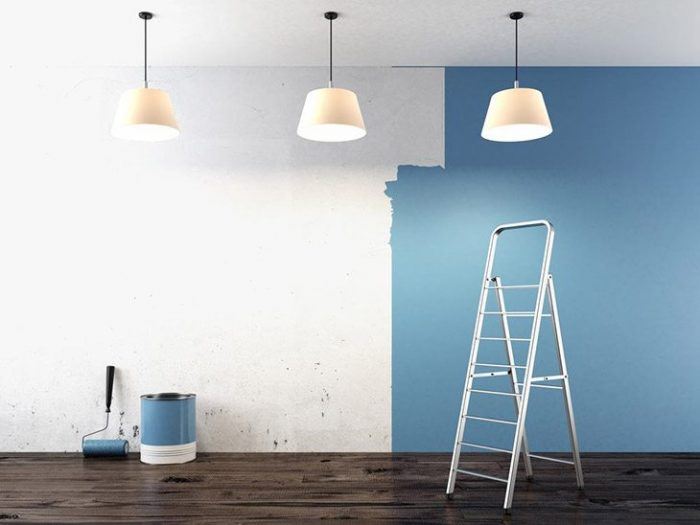Different types of paint indeed share different purposes. Before painting your space and picking the appropriate paint, it is necessary to review the components and the difference between interior and exterior paint.
Interior and exterior paint have four main components, including solvents, pigments, resins, and additives. If you occupy latex paint, its solvent is water. In oil-based paint, the solvent is composed of mineral spirits. The solvent causes the paint to be ‘wet’. It will immediately evaporate as the paint dries.
Pigments, resins, and additives are lasting substances in the paint. As the paint dries, you are left with these ingredients although the solvent evaporates. Pigment is the substance which gives the paint color. Both interior and exterior paints vary in paint finishes from gloss to matte. Some pigments can fade much quicker than others, and the typical pigments are less commonly used in exterior formulations. Exterior paint may also contain more pigment.
The pigment is bound to the surface by the resin. Epoxy, acrylic or silicone are some typical ingredients to make resins. Meanwhile, the additive is the paint substance that shares some features. It causes resistance to the growth of mildew. It also makes the paint easier to apply and clean.

The Difference Between Interior and Exterior Paint
1. The Resins Used
Resin is the substance used for binding paint pigments to the patio, and the choice of resin can share a great difference between interior and exterior paint. Exterior paint must stand up to all kinds of extreme weather conditions and must resist being exposed to moisture as it is occupied outdoors, so it must also be stronger to survive peeling, chipping, and fading. Therefore, exterior paint must be bound to the surface with flexibly softer resins to keep the paint looking good despite all extreme exposures.
Interior paint doesn’t get wet by the rain or exposed to direct sunlight and will be less likely to be exposed to a big freeze, so the resin used is more rigid. It makes interior paint less prone to damage from scuffing and smearing and offers ease in cleaning.
2. Scuffing and Scratches Resistance
Many people think that exterior paint may perform better indoors, so it must be able to survive more abusive exposures. However, the fact shows that it’s not true. Exterior paint is surprisingly more prone to damage from scuffing, smearing, and scratches as it contains much softer resins. On the other side, interior paint occupies more rigid resins that’ll result in being less prone to scuffing and scratches.
3. Volatile Organic Compounds (VOCs)
Volatile Organic Compounds (VOCs) are essentially toxins that can affect the health of those exposed to the paint for a long time. The health effect results in less or even zero use of them in interior paint.
Exterior paint is made to be more resistant to extreme exposures, like temperature changes, sunlight, wind, and rain. For these reasons, exterior paint is made stronger. Thus, it contains extra VOCs.
4. The Odour Released
Either water-based or oil-based exterior paint can be used outdoors, but interior paint doesn’t normally use oil-based substances due to its odour and difficulty cleaning up. Avoid the use of exterior paint indoors as it has additional resins which can cause outgassing. Mildewcides and fungicides included in exterior paint can also release odour on humid days, and allergies may even be triggered.
Unlike exterior paint, interior paint is delicate and doesn’t outgas in the same way. Thus, interior paint is safer to apply indoors. Keep in mind to provide adequate ventilation when painting indoors.
Conclusion

There are similarities and differences between interior and exterior paint as it’s made for different purposes. Some substances have disadvantages that’ll be less healthy. Therefore, it’s important to know each component featured in your paint. Consulting with a professional painter is also necessary to know which paint to use both indoors and outdoors.
More from Materialsix.com: